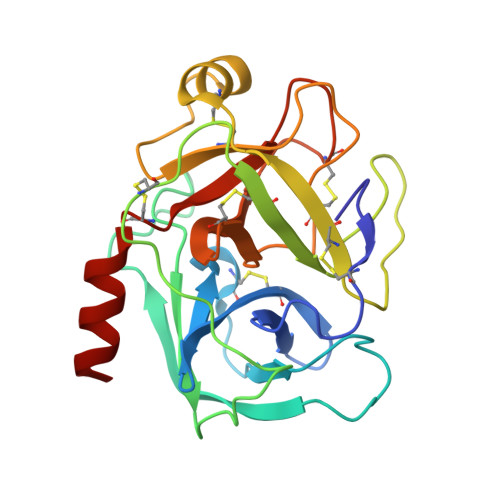High throughput screening using acoustic droplet ejection to combine protein crystals and chemical libraries on crystallization plates at high density.
Teplitsky, E., Joshi, K., Ericson, D.L., Scalia, A., Mullen, J.D., Sweet, R.M., Soares, A.S.(2015) J Struct Biol 191: 49-58
- PubMed: 26027487
- DOI: https://doi.org/10.1016/j.jsb.2015.05.006
- Primary Citation of Related Structures:
4TPY, 4TVT - PubMed Abstract:
We describe a high throughput method for screening up to 1728 distinct chemicals with protein crystals on a single microplate. Acoustic droplet ejection (ADE) was used to co-position 2.5nL of protein, precipitant, and chemicals on a MiTeGen in situ-1 crystallization plate? for screening by co-crystallization or soaking. ADE-transferred droplets follow a precise trajectory which allows all components to be transferred through small apertures in the microplate lid. The apertures were large enough for 2.5nL droplets to pass through them, but small enough so that they did not disrupt the internal environment created by the mother liquor. Using this system, thermolysin and trypsin crystals were efficiently screened for binding to a heavy-metal mini-library. Fluorescence and X-ray diffraction were used to confirm that each chemical in the heavy-metal library was correctly paired with the intended protein crystal. A fragment mini-library was screened to observe two known lysozyme ligands using both co-crystallization and soaking. A similar approach was used to identify multiple, novel thaumatin binding sites for ascorbic acid. This technology pushes towards a faster, automated, and more flexible strategy for high throughput screening of chemical libraries (such as fragment libraries) using as little as 2.5nL of each component.
Organizational Affiliation:
Office of Educational Programs, Brookhaven National Laboratory, Upton, NY 11973-5000, USA; Department of Biochemistry and Cell Biology, Stony Brook University, NY 11794-5215, USA.






















